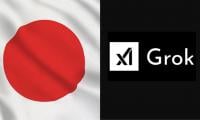E&P companies plan offshore drilling in January 2019
KARACHI: A joint venture of local and foreign energy firms plan to invest $70 million in drilling offshore Indus G-Block in January next year, a senior official said on Tuesday.
The joint venture comprising Oil and Gas Development Company (OGDC), Pakistan Petroleum Limited (PPL), ENI and ExxonMobil, have planned drilling of the first exploratory well Kekra-1 in offshore Indus G-Block, OGDCL Managing Director Zahid Mir said. He said an investment of $70 million had been earmarked for the project, which would be contributed equally by the joint venture partners.
“The block has very high prospects, and exploratory well Kekra-I has strategic importance for the region as we are expecting a multi-billion cubic feet of gas flows from the block,” Mir said.
“The well will be spud in ultra deep waters and the joint venture is in the process of finalising the contract with the ENI’s contracted drilling ship, which would start moving towards Pakistan by December of this year.”
Based on surveys and prospect reports, OGDCL chief believes the discovery could be even larger than that of Sui. “If a success, this would be a game changer for the country as well as the entire region,” he added.
According to analysts, the joint venture in Indus G block is mainly targeting carbonate play as a possible hydrocarbon bearing reservoir. The management is optimistic about ExxonMobil’s entry in Pakistan as it brings huge experience of deep and ultra-deep water drilling to Pakistan.
Analysts believe, even if commercially viable discovery is made, commencement of production may take several years depending upon availability/setting up of necessary infrastructure.
Pakistan’s oil and gas sector witnessed a major development recently when the world’s largest energy company ExxonMobil acquired 25 percent stake in Pakistan’s offshore Indus G block. This development could be seen as a major breakthrough as it might lead other international energy firms to bring foreign investment in Pakistan’s energy sector.
Indus G block is approximately 7,500 square kilometres located in ultra-deep water offshore Pakistan. ENI is the operator of the block.
In total, over a dozen offshore wells have been drilled in more than five decades with no commercial discovery. Last offshore well Shark-1 was drilled by ENI in 2010 along with PPL that turned out to be dry.
Offshore exploration in Pakistan dates back to 1963 when an American company drilled three near shore wells for the first time encountering no hydrocarbons. OGDCL drilled PakCan-1 well with Canadian assistance which also went dry in 1986. Subsequently, all the attempts to find hydrocarbon offshore Pakistan have failed.
Thanks to better gas pricing in Petroleum Policy 2012 and higher oil prices, local and foreign E&P companies have again shown interest to drill offshore well in Indus G block. As per Petroleum policy 2012, offshore Indus G block falls under Zone-0 price mechanism.
According to analysts, if crude oil price stays $70 a barrel, any discovery in Zone zero (ultra deep), will be priced at around $8.5/MMBTU (million British Thermal Units) including incentive of $1/MMBTU for first three offshore discoveries. This price is almost double than that in Petroleum Policy 2009.
-
 Philippines Blocks Elon Musk’s Grok AI
Philippines Blocks Elon Musk’s Grok AI -
 Jennifer Lawrence Blames Internet For Losing Sharon Tate Role
Jennifer Lawrence Blames Internet For Losing Sharon Tate Role -
 DeepMind, Google CEOs Sync Daily To Accelerate AI Race Against OpenAI
DeepMind, Google CEOs Sync Daily To Accelerate AI Race Against OpenAI -
 Japan Launches Probe Into 'Grok AI' Following Global Scrutiny Over 'inappropriate' Content
Japan Launches Probe Into 'Grok AI' Following Global Scrutiny Over 'inappropriate' Content -
 Prince Harry All Set To Return To Britain Next Week?
Prince Harry All Set To Return To Britain Next Week? -
 Is Princess Charlotte Becoming Most Confident Young Royal?
Is Princess Charlotte Becoming Most Confident Young Royal? -
 ‘Stranger Things’ Star David Harbour Speaks Up About ‘psychotherapy’
‘Stranger Things’ Star David Harbour Speaks Up About ‘psychotherapy’ -
 Jennifer Love Hewitt Talks About Scary 9-1-1 Episode
Jennifer Love Hewitt Talks About Scary 9-1-1 Episode -
 Kate Middleton Ditches Palace Life For Where She 'truly Relaxes'
Kate Middleton Ditches Palace Life For Where She 'truly Relaxes' -
 Pixel Watch May Soon Warn You If You Leave It Behind
Pixel Watch May Soon Warn You If You Leave It Behind -
 Serious Liver Scarring Shows Potential To Be Reversed With Latest Drug
Serious Liver Scarring Shows Potential To Be Reversed With Latest Drug -
 Elon Musk Backs Donald Trump To Invoke Insurrection Act Amid Minnesota Protests
Elon Musk Backs Donald Trump To Invoke Insurrection Act Amid Minnesota Protests -
 Scientists Unravel Mystery Of James Webb’s ‘little Red Dots’ In Deep Space
Scientists Unravel Mystery Of James Webb’s ‘little Red Dots’ In Deep Space -
 Nano Banana Explained: How Google’s AI Got Its Name
Nano Banana Explained: How Google’s AI Got Its Name -
 Fire Causes Power Outage On Tokyo Train Lines, Thousands Stranded As ‘operations Halted’
Fire Causes Power Outage On Tokyo Train Lines, Thousands Stranded As ‘operations Halted’ -
 YouTube, BBC To Ink Landmark Deal To Launch Exclusive Bespoke Shows
YouTube, BBC To Ink Landmark Deal To Launch Exclusive Bespoke Shows



